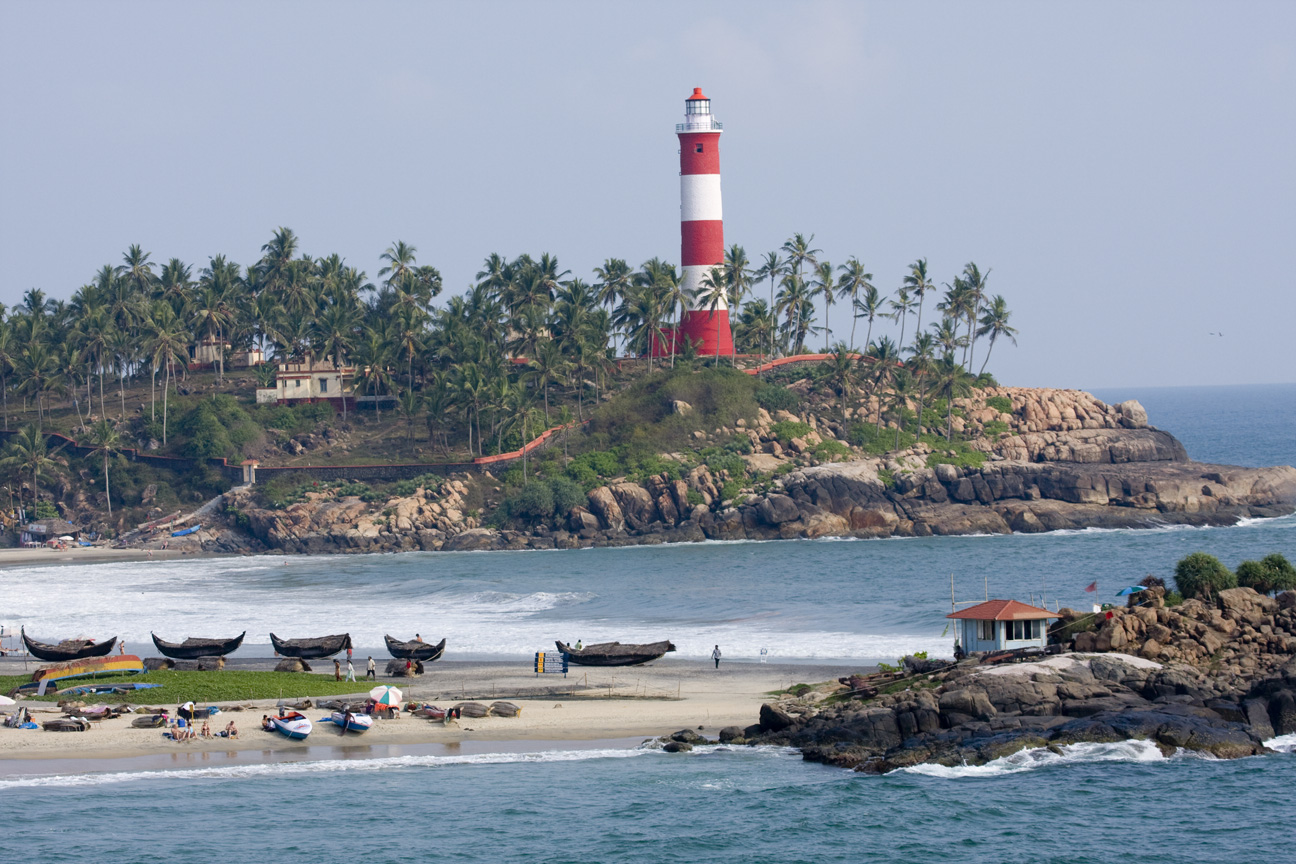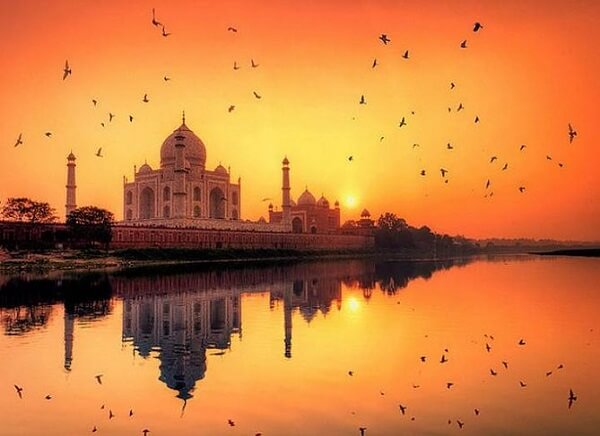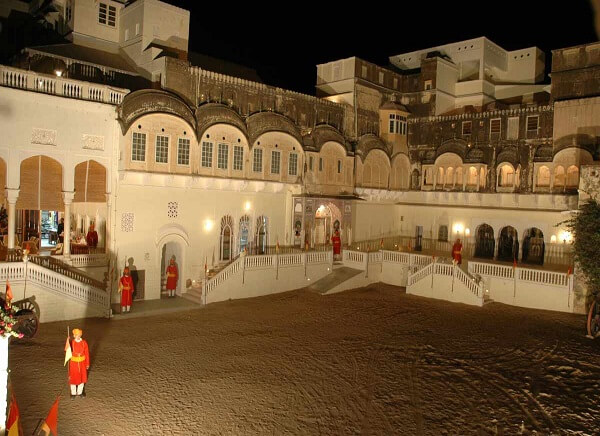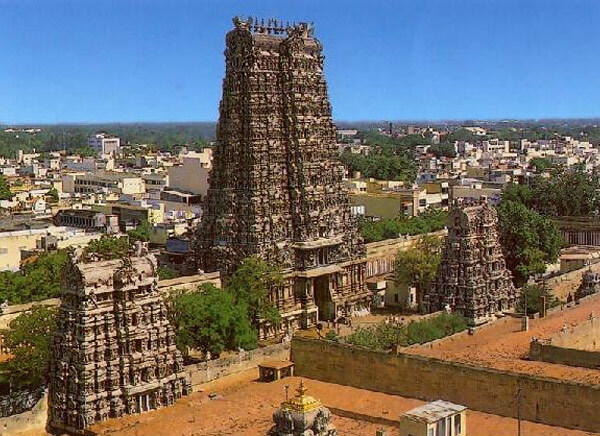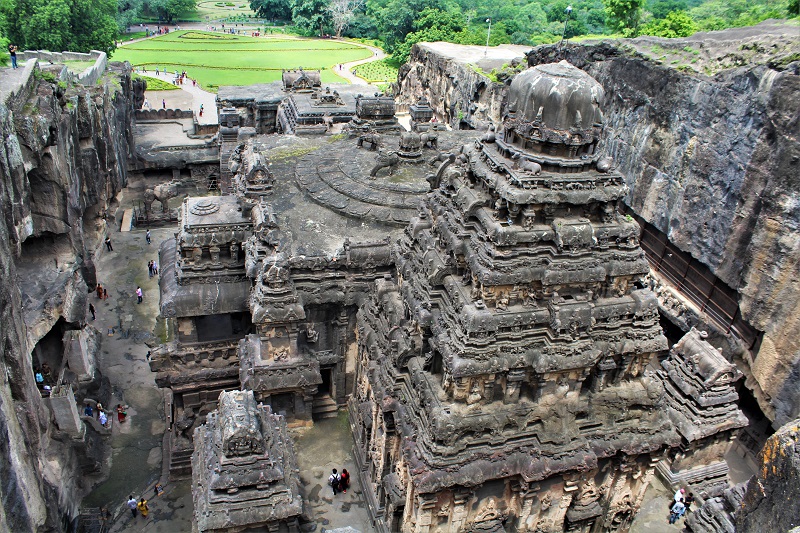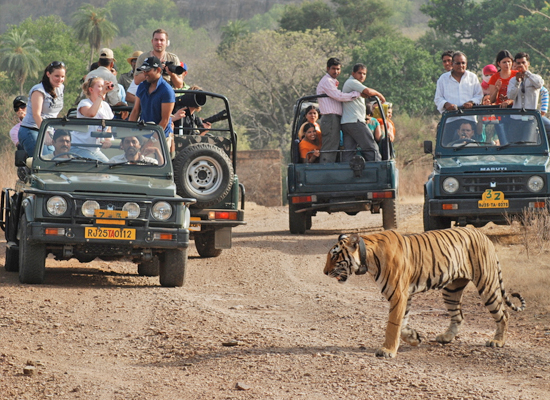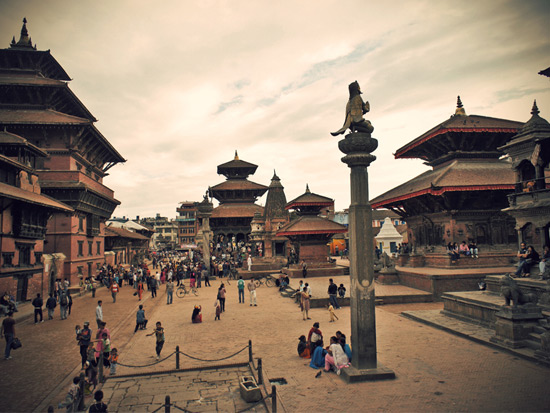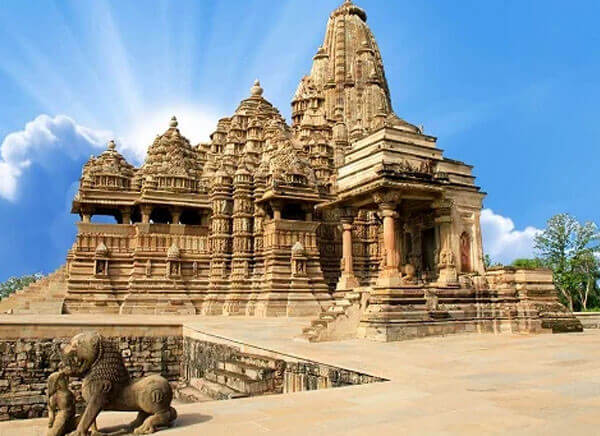23 Major Tribes In India
India and surrounding countries have numerous tribal communities, who were the aboriginal settlers or refugees from other regions. Some of these tribal communities tend to maintain isolation from the general population, while others attract tourists with their colorful culture.
Here are the List of Tribes in India.:
1. Munda
Region: Central and Eastern India
Munda are ethnic groups who live in Jharkhand, Bihar, Chhattisgarh, and other states of India. These hunter-farmers are famous for their basketwork, weaving, and other craftwork. Top festivals celebrated by this tribe are Karam, Sohrai, Baha parab, Mage Parab, and others. Visit the tribal settlements during festivals to enjoy folk song, tale narration, musical instrument playing (naqareh), and others.
The religion of the clan is derived from Hinduism and they pray to the sun God. Marriages take place as a week-long celebration. According to historians, the language of Munda people is more than 3500 years old.
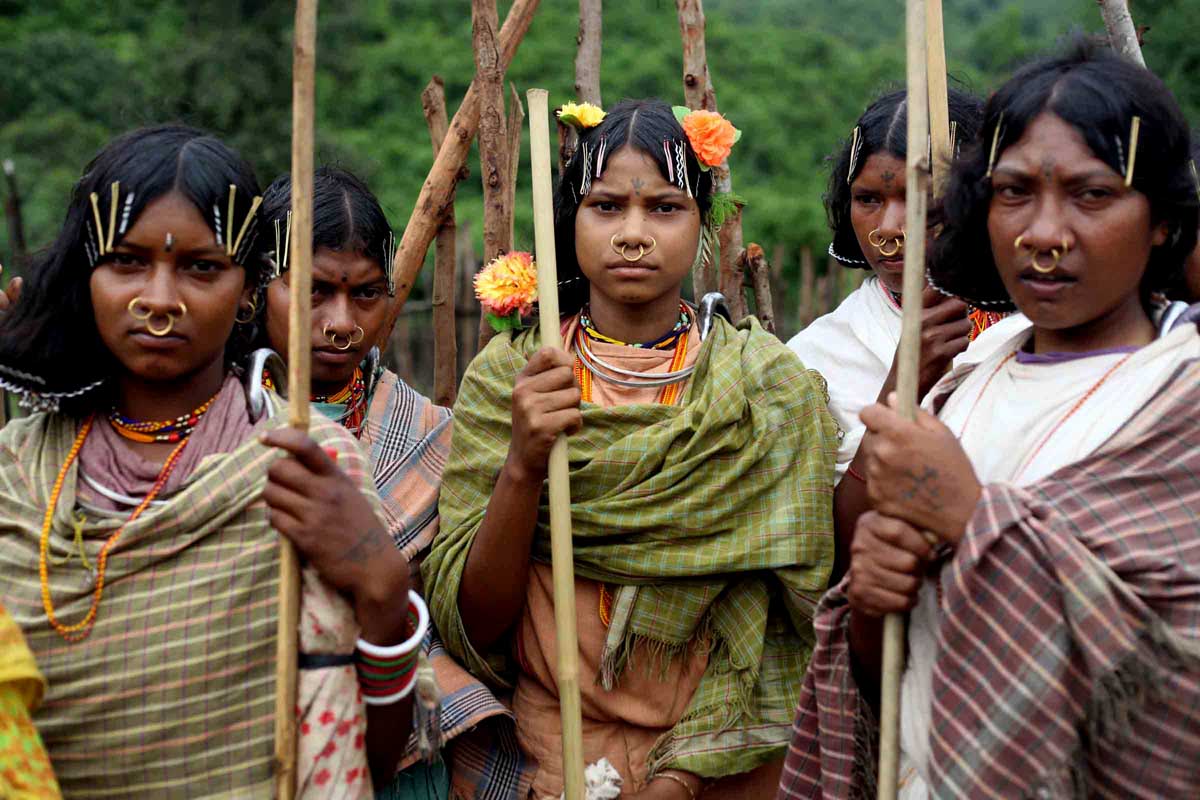
Also Read : Top 20 Richest Temples in India
2. Santhal
Region: W. Bengal and Chhattisgarh
In terms of population, this is one of the largest tribal groups and you can find people of this tribe in Nepal, Bangladesh, and India. The common language of this tribe is Santali, which is an Austroasiatic language. The religion of the tribe is headed by Bonga and many spirits, which safeguards the tribes.
The main shrine of the tribes is a large grove, which is believed to be the place where the spirits live. Many annual festivals take place in this grove.
Witchcraft, festivals, and animal sacrifices are common in this tribal group. If you wish to enjoy the culture of this tribe, visit during Sohari festival to enjoy drum music, dance, puppet shows, and others. Santal artform is also famous, which consist of carved ornaments with dancing scenes, hunting scenes, animals, and others.
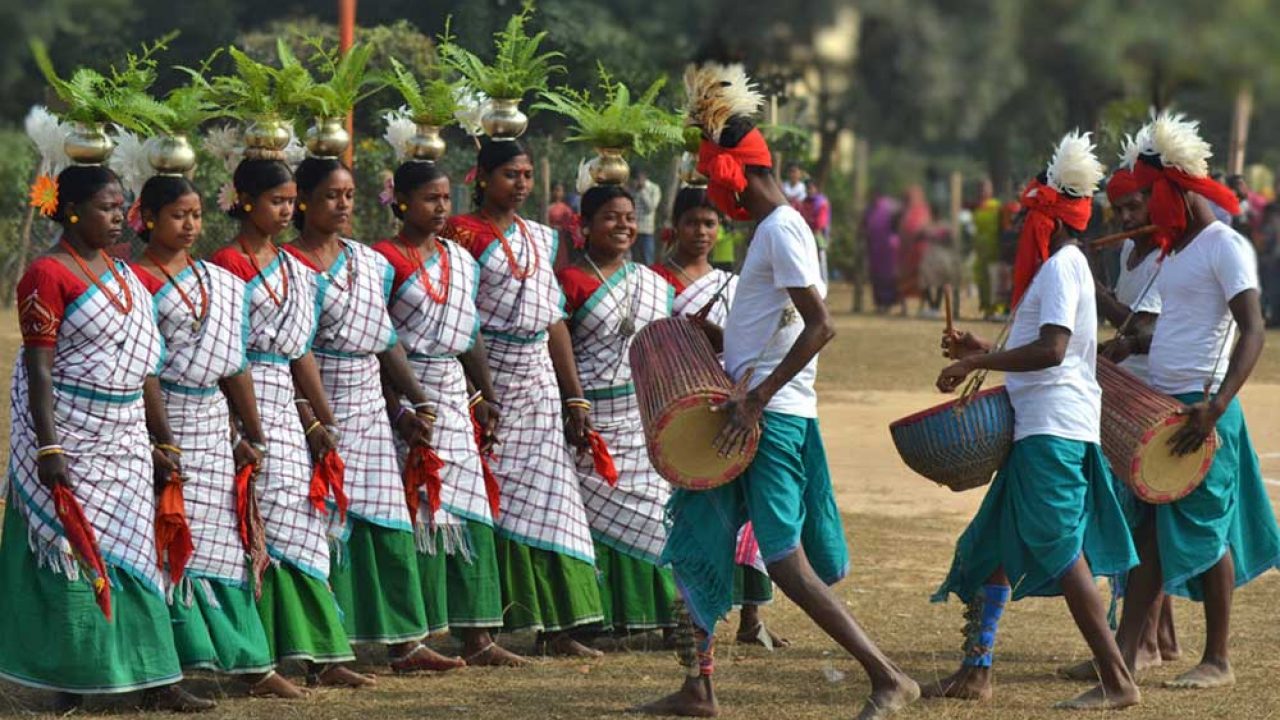
Also Read: Top Tourist Spots To Visit In West Bengal
Suggested Tour : Kolkata Full Day Sightseeing Tour
3. Badaga
Region: Tamil Nadu
Badagas or Badagas live in the Nilgiri region and speak Badugu. There are more than 400 villages with this tribe in Tamil Nadu. This tribe is the descendants of Lingayat refugees of 12th century. The main attire of the tribe is thundu (a white cloth) for male and seeley (saree) for women. They marry within the tribe and strictly follow the traditions.
They worship their founding ancestors as God. The car festival of Sri Mariamman Temple of Ooty is quite interesting among tourists. Tourists can take part in the temple chariot pulling, dance, music, procession, and others.
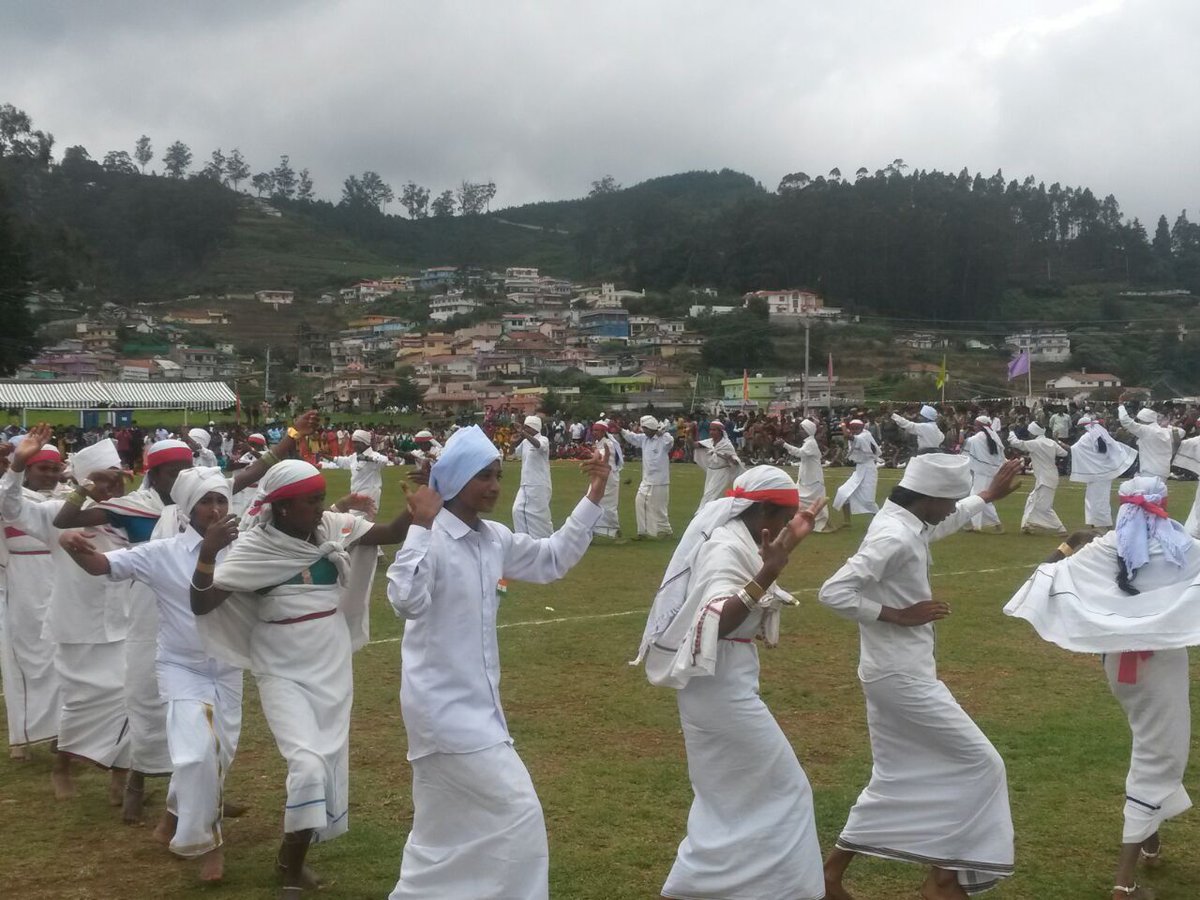
Suggested Tour:
- 1 Day - Private Day Tour of Madurai
- 4 Days - Madurai Rameshwaram Kanyakumari Temple Tour
- 5 Days - Tamil Nadu Temple Tour
- 7 Days - South India Pilgrimage Tours
4. Bodo-Kachari
Region – Assam and Arunachal Pradesh
Bodo-Kachari and other tribes like Kukis, Khamtis, and others are living in harmony depending on traditional hunting and farming for sustaining. Bodo is one of the common languages of this tribe. This tribe is a part of the Tibeto-Burman community that originated from Tibet. The tribe considers themselves as a lower-caste of Hinduism.
Bodo-Kachari is a collection of numerous tribal communities and Bodo is the most significant of all. Bodo-Kachari brought in silkworm rearing knowledge to Assam. If you visit the tribal villages during any festival, you can enjoy fire ceremony, folk performances, and others. Kherai Puja is the most significant festival of this community.
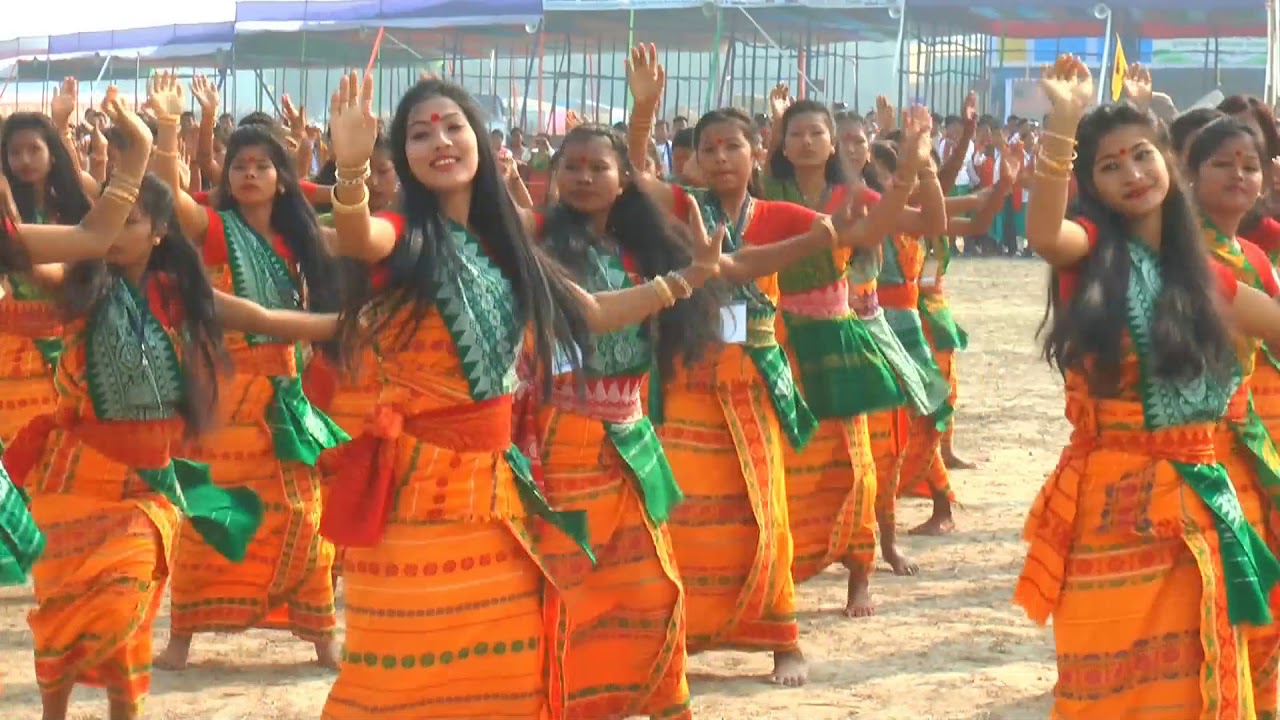
Also Read: List of Top Fairs & Festivals in India
5. Chakma
Region – Bangladesh and north-east India
Chakma is a very large ethnic group, which is divided into 46 different clans. Most of the clans follow Therevada Buddhism. According to folklore, the tribe migrated from Bihar. Every tribal village will have a vihar, which is open for tourists too. You can find Buddhist monks in these vihars.
Chakma tribe believes in spirits bringing bad omen. So, they celebrate several festivals to pacify those spirits. These festivals are unique and exotic including sacrificing ducks, goats, and other animals.
The common language of the tribe is Changma Bhach, which has a written script too. Folklore, literature, dance, music, and others are common in this tribe.
Visit the villages to see their monoghara houses built with bamboo and logs. Women of the culture wear a waist cloth that runs up to their ankle. They also wear a silver wrapping right above the waist. Visit the tribal markets to buy handlooms, handicrafts, and others.
Top festivals to enjoy in these villages are Bizu, Buddha Purnima, Alphaloni, KathinCivar Dan, and others. Feasts are common during festivals, and tourists are welcomed to take part in the celebrations. Top dishes to try during your visit are fish cooked inside bamboo shoot, pazon ton, banana leaf wrapped vegetables and others.

North East India Travel Guide:
- Best Time to Visit
- Culture
- Top Festivals
- Foods in North East India
- History
- How to Reach North East India
- Best Places to Visit
- Things to Buy
- Wildlife Sanctuaries
Suggested Tours :
6. Gond
Region: Gondwana Land (between Madhya Pradesh and Odisha)
Chhattisgarh is famous for its cultural beauty and more than one-third of its population is tribal. The most common group in the tribal group is Gonds. Gonds are famous for its artworks, festival celebrations (especially Dusshera), and unorthodox marriage culture.
There are numerous clans within Gond and thus, no two villages of Gond would have a similar culture. They perform agriculture along the hill slopes. The Gond language is primarily a version of Telugu with words from other Dravidian languages. Gonds follow Hinduism and are familiar with numerous astronomical calculations.
Major festivals to enjoy in these tribal villages areDusshera, Naga Panchami, cattle festival (Pola), and others. Elephant procession, effigy burning ceremony and cultural attractions of Dusshera make it the best time to visit Gond villages.
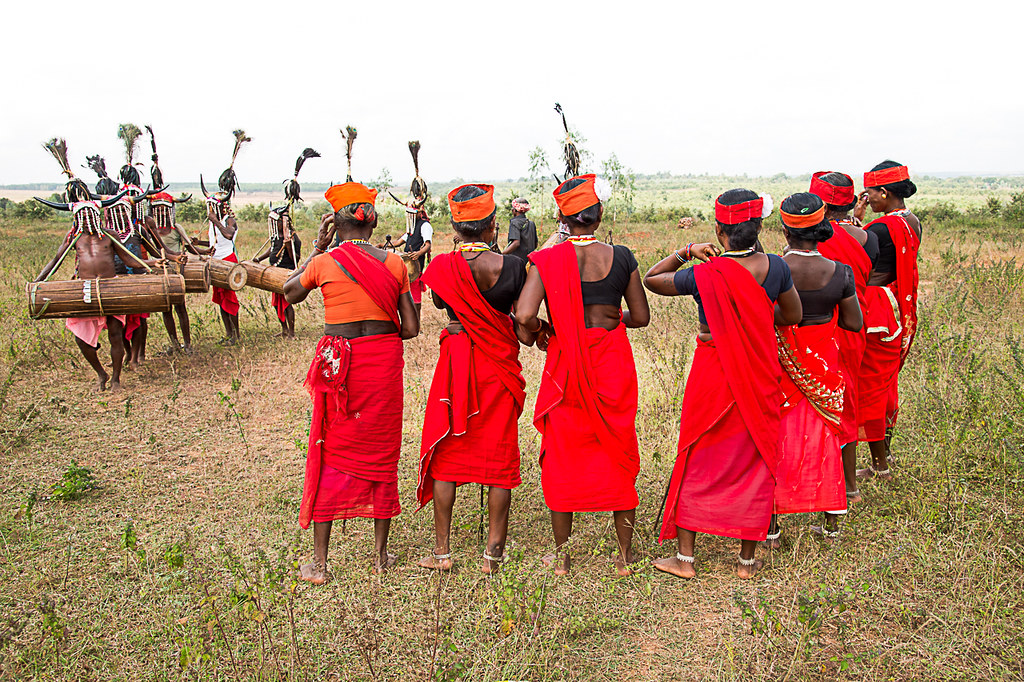
Also Read: 10 Famous Festivals In India In August 2020
7. Bhutia
Region: Sikkim and other countries like Tibet and Bhutan
This tribe has a Tibetan ancestry. The language spoken by this tribe is Sikkimese and they follow Tibetan Buddhism. Women are given more importance in the society. The traditional jewelry is made with 24 caret gold. Women wear silk sleeve blouse with a loose gown and waist belt. Men wear bakhu with trousers. Married women wear a sheet of wool with geometric design.
The best time to visit Bhutia village is during festivals like Lossong and Losar. Losar (Tibetan New Year) celebration is famous for fire dance and other cultural performances. Losoon takes place in December and is famous for Chaan dance and merry making. Tourists can also visit the Bhutia Buddhist monasteries to watch the rituals. Top dishes to try during your visit are momos, Chhaang, butter tea, thukpa, noodles, and others.
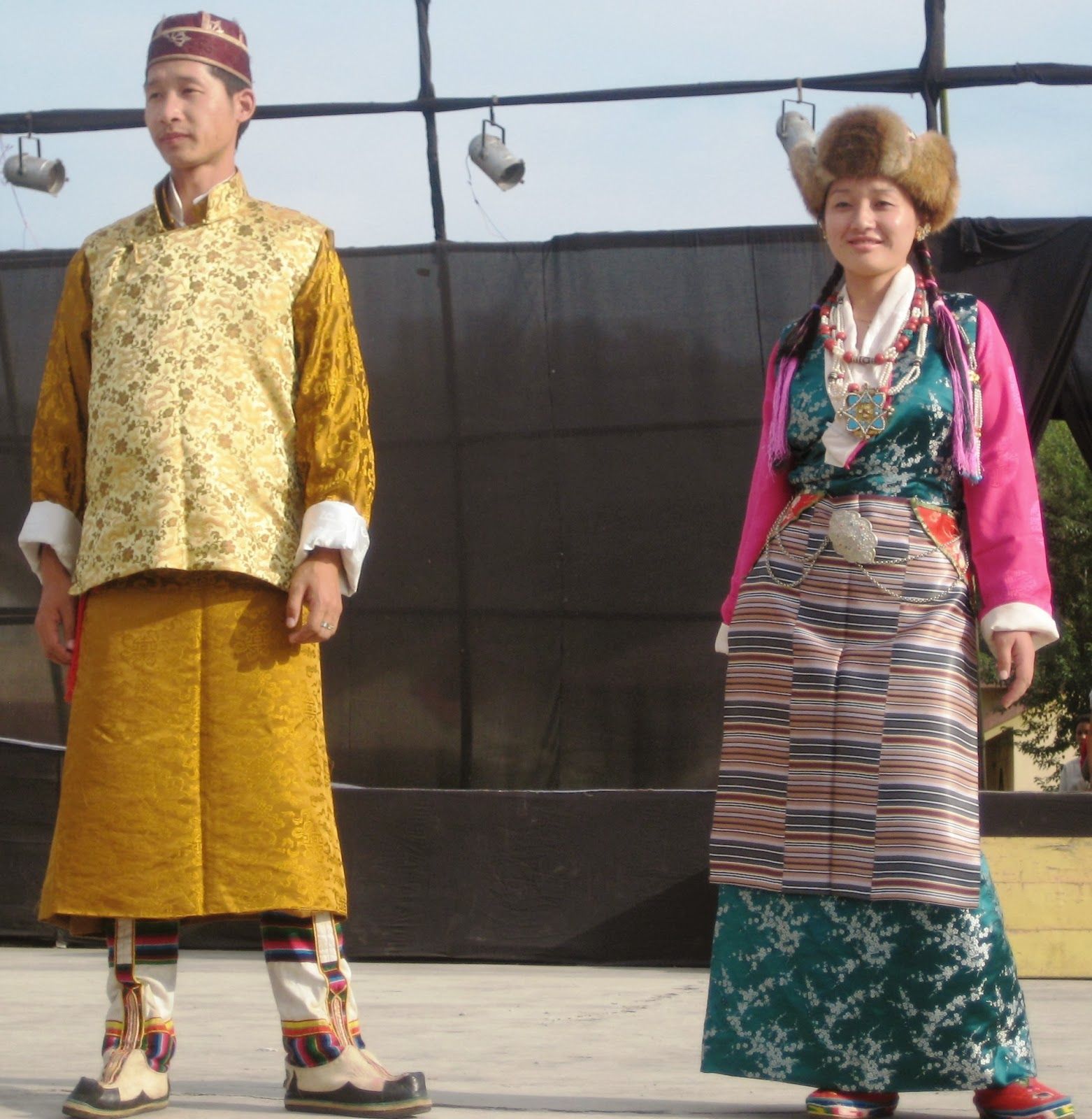
Also Read: What To Do In Tibet In 10 Days
Suggested Tour:
- 4 Days - Tibet Lhasa City Tour
- 8 Days - Tibet Tour From Lhasa
- 8 Days - Tibet Tour From Nepal Via Everest Base Camp
- 16 Days - Tibet Tour From Nepal Via Everest Base Camp
8. Lepcha
Region: W. Bengal, Nepal, and Bhutan
Lepcha call themselves as the Children of God. There are four different communities under this tribe. They speak Lepcha, which has a script too. You can find numerous old manuscripts written in this script. Most of the tribal communities are Buddhist and a few are Shamanistic and Christians.
Women wear one long piece of cloth made with silk or cotton up to their ankle. They wear a blouse underneath it. Men wear multicolored cloth with a conical hat of rattan or bamboo. They live in bamboo houses that stand on stilts. This tribe grows cardamom, oranges, and rice.
If you visit their villages, you ought to enjoy their traditional dance and music celebrations, buy basketry items, and enjoy lute music. To enjoy all these, you ought to take part in their marriage celebration.
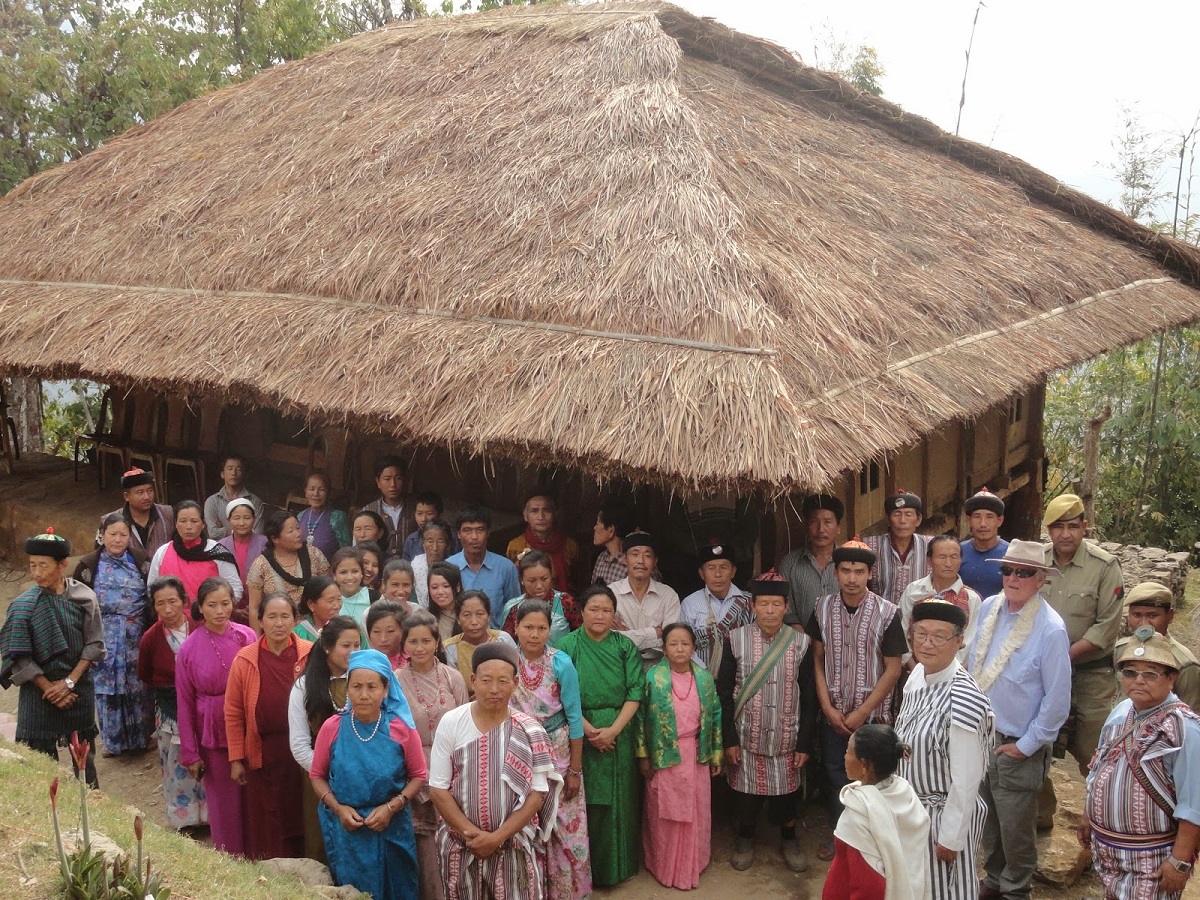
Also Read : Losar Festival! Celebration and Highlights in India
Suggested Tour: 12 Days - India Nepal Buddhist Tour
Nepal Travel Guide:
- Best Time To Visit Nepal
- Culture of Nepal
- History of Nepal
- Monasteries in Nepal
- Mountain Biking In Nepal
- Temples in Nepal
- Things to do in Nepal
- Trekking in Nepal
- What to Eat in Nepal
- Reasons to Visit Nepal
9. Irula
Region: Tamil Nadu
Irula tribe lives in Nilgiri regions. They speak Irula and they are named after their very dark skin. They are versed in catching snakes and rats in the agricultural regions of South India. If you are up for some adrenaline action, watch the tribal men catch deadly snakes.
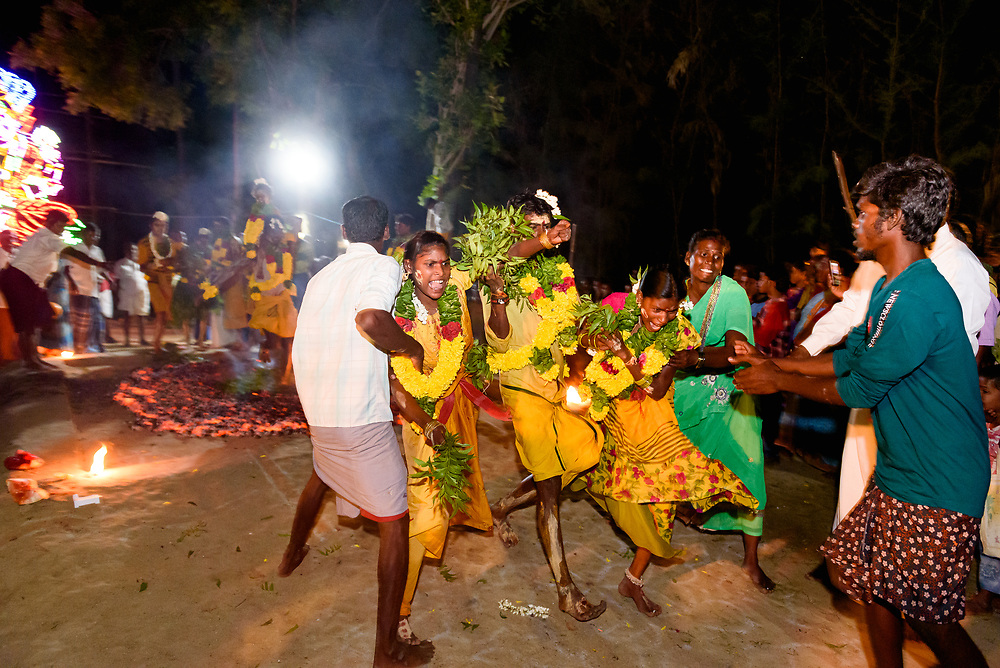
10. Karbi
Region: Assam
Also called Mikir, this tribe can be seen commonly in hill regions. People call them, the Assam’s Columbus. They practice Animism and you can also find Hindus and Christians in this tribe. Their native language is Karbi and they are divided into five clans. This tribe is famous for encouraging love marriage more than an arranged marriage. Members within a clan should not get married.
The best time to visit these clans is during festivals like Chojun, Hacha-Kejan, ThoiAsor RitAsor, Peng Karkli, and others. The festivals are celebrated with dance, music, and merrymaking. Narrative songs are quite common here. Karbi instrument music is also famous among tourists.
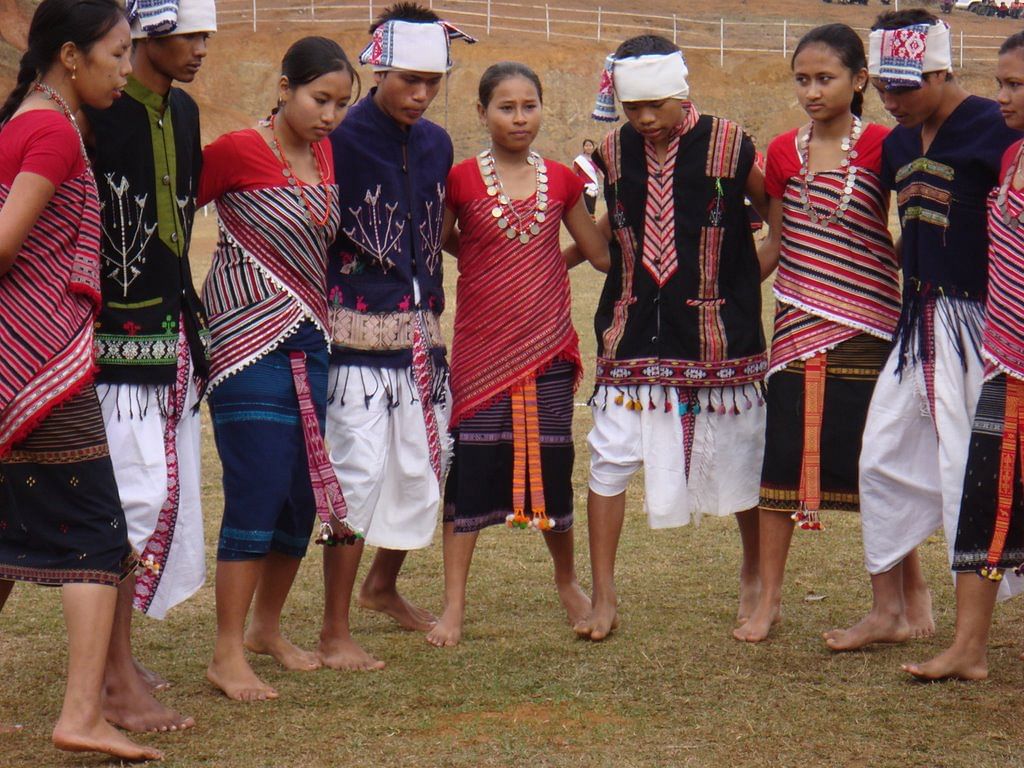
Also Read: 15 Famous Festivals in North East India
Suggested Tour: 3 Days - Kaziranga National Park Tour
11. Khasi-Jaintia
Region: Meghalaya
Khasi and Jaintia are hill regions in Meghalaya. The tribes who live in this region speak Astroasiatic language. Most of the people follow Christianity and a few follow the KaNiam Khasi religion. The Christians of this tribe pray to Snake God, named U Thlen. Men dress in sleeveless coat or sarong with turban. Female dress in several pieces of cloth fastened together and a crown.
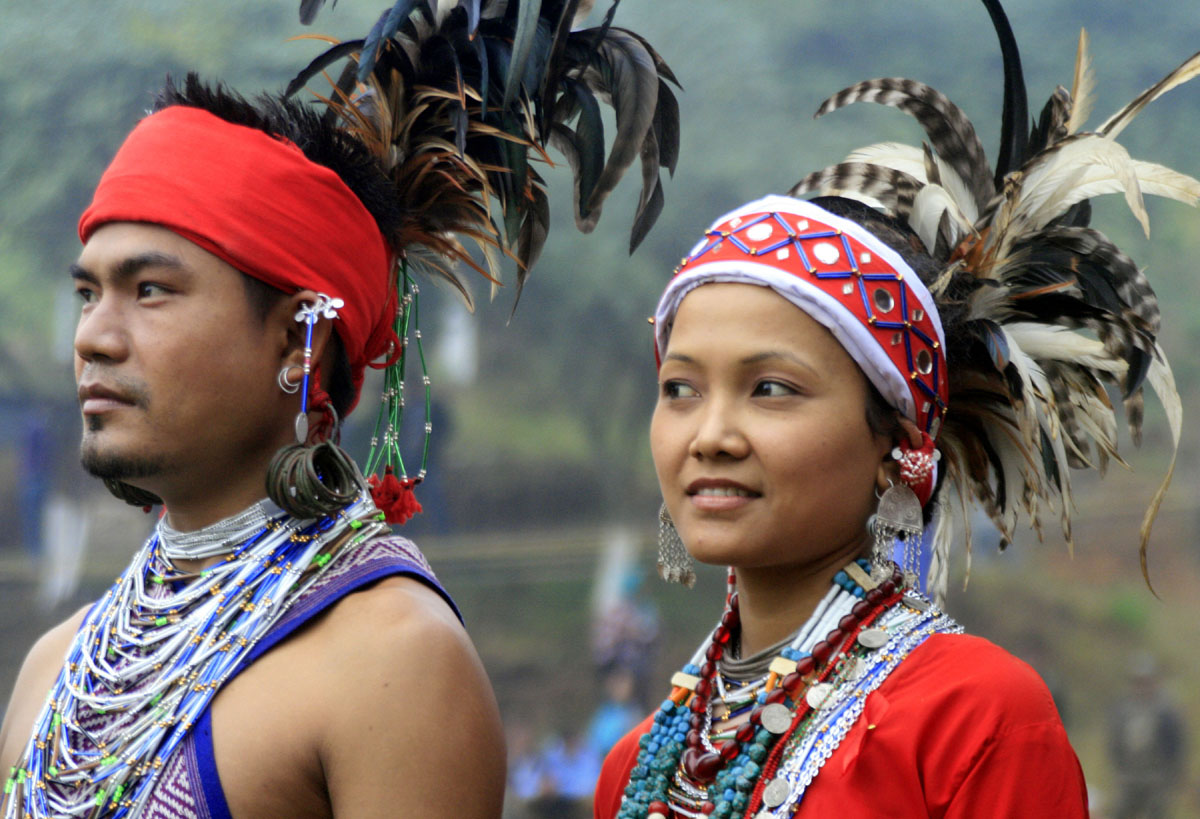
Best time to visit the villages is during Shad Nongkrem festival, which takes place in July. This is the time to enjoy musical instrument plays, dance, song, and others.
Also Read : Best Places To Celebrate Christmas in India
Suggested Tour: 4 Days - Shillong Tour Package
12. Kisan
Region: Orissa
Kisan is a tribe who are farmers and gatherers. They speak Kurukh language. If you are visiting their village, make sure to buy honey. You can also watch them gather honey with traditional methods. They follow Hinduism and celebrate all the Hindu festivals. You can also find traditional medicine men in the villages.
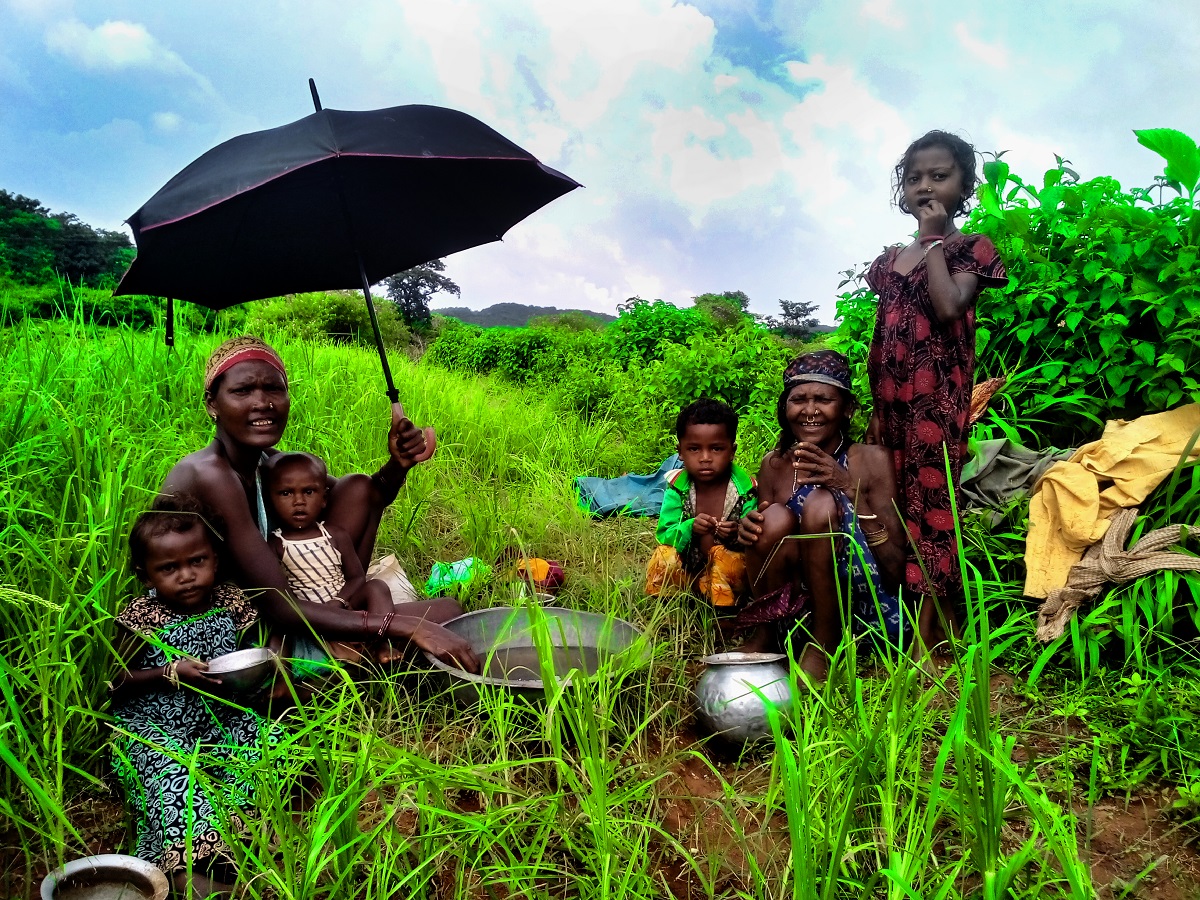
Also Read: Top Festivals in September and October 2020 India
13. Kodava
Region: Kodagu, Karnataka
Kodava or Coorg tribe speak Kodava language and are traditionally agriculturalists. Men wear robes with a waist scarf and women wear sari with loose end around their shoulder. This tribe can carry knives and guns without license. Martial war dance of this community is quite famous.
Important tribal delicacies to try are kadumbuttu, pandi curry, akkipayasam, noolputtu, paaputtu, thambuttu, and others. Visit during Hindu festivals like Ayudha Pooja, Ugadhi, Mahashivaratri, and others to take part in cultural celebrations.
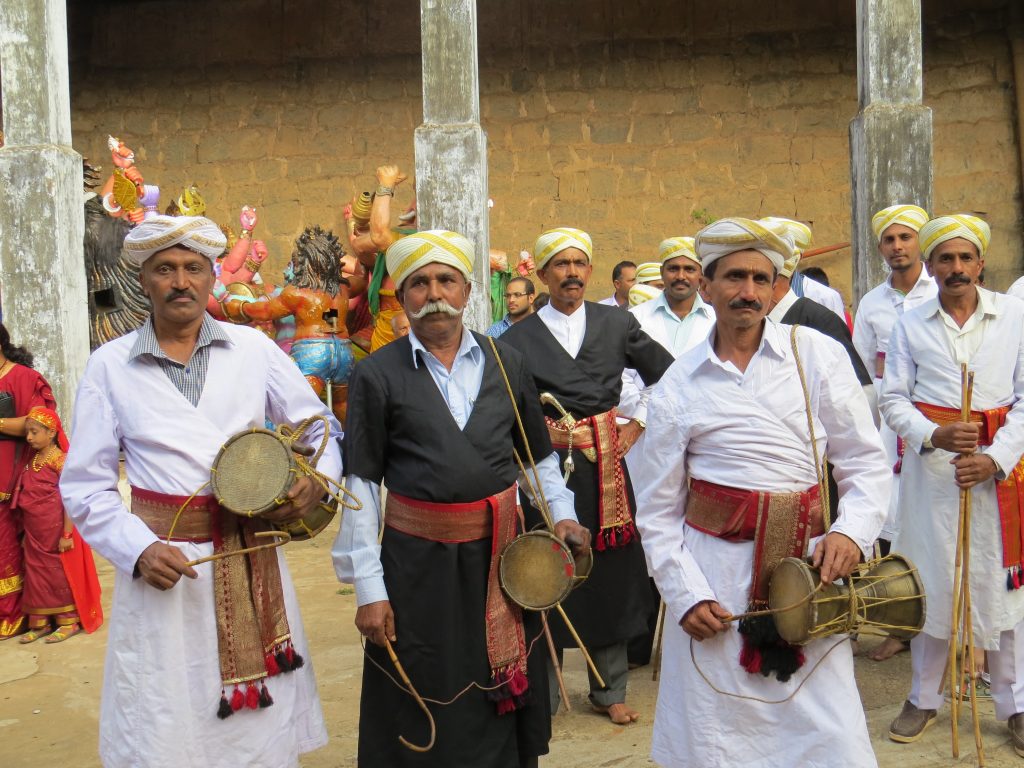
Visit in September to take part in the festival of arms to watch men taking part in hunting games, physical competitions, and others.The top monuments of Kodava to visit are Bhagamandala temple, Omkareshwara temple of Madikeri, and others.
Also Read: Top Places to Visit in Coorg, Karnataka
Suggested Tour:
- 4 Days - Coorg Madikeri Hill Station Tour Karnataka
- 8 Days - South India Temple Tours
- 15 Days - South India Temple Tour Package
14. Kota
Region: Tamil Nadu
This is another ethnic group native to Nilgiri region. This tribe has knowledge in anthropology fields. They speak Kota language and follow Hinduism. Vatamk, a type of millet is their staple food and you can also find local cuisine items like sambar, meat curries and others.
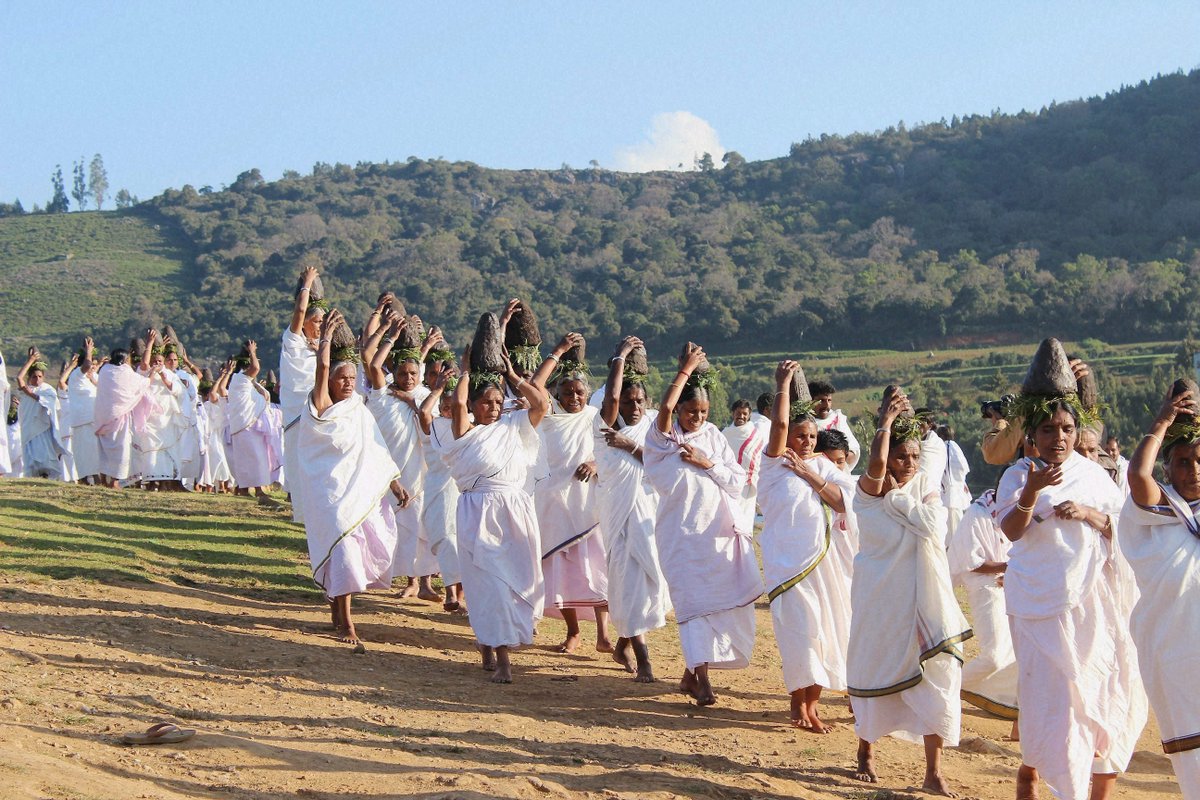
If you are visiting Kota village, explore their temples to watch unique rituals. The best time to visit this village is during Kamatraya Festival to enjoy instrumental music playing, dance, merrymaking, and others.
Also Read: Pongal Festival - Tamil Harvest Festival of South India
15. Kuruba
Region: Andhra Pradesh, Tamil Nadu, and Karnataka
Kuruba is the second biggest caste-based group in the country. They were traditionally shepherds and now, they are mostly farmers. 22nd CM of Karnataka, Siddaramaiah belonged to this tribe. If you visit their village, try to buy wool blankets, which is a very common craft in this region.
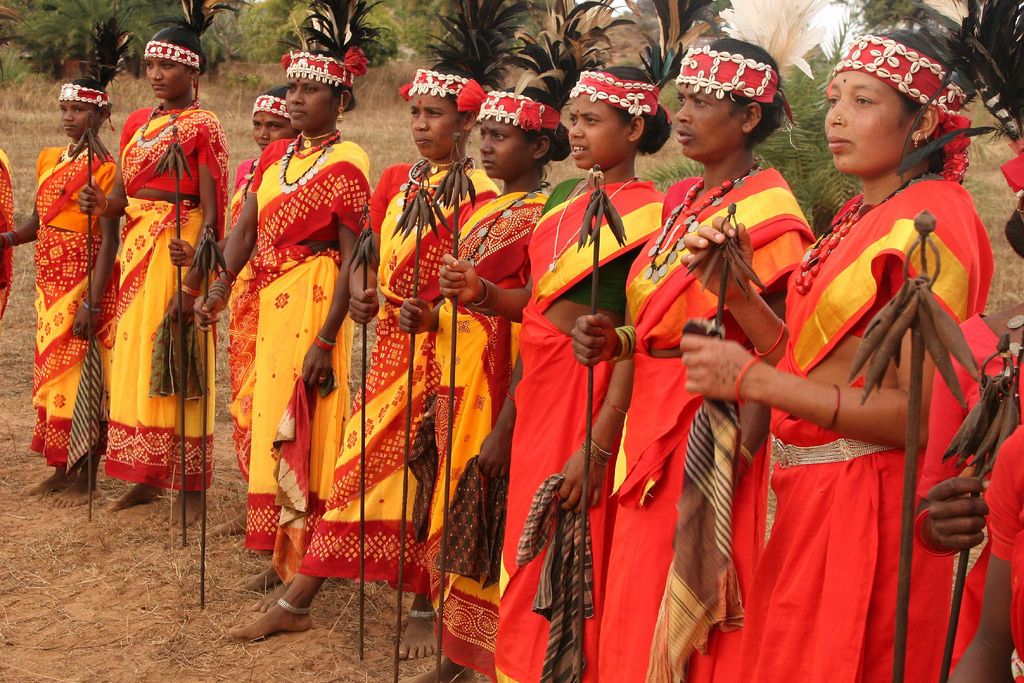
Karnataka Travel Guide:
- About Karnataka
- Andhra Pradesh Travel Guide
- Heritage Site of Karnataka
- History of Karnataka
- Tourist Destinations in Karnataka
16. Ladakhi
Region: Jammu and Kashmir
As the name indicates, this tribe lives in the Karakoram and Himalayan regions of Ladakh. They are primarily Buddhists and Muslims. They are small-time farmers and shepherds. Tourism is very common in the villages of these tribes. Polyandry is very common in this tribe. Tourists visit this tribe region during festivals to watch their cultural beauty. You can find several museums that describe the culture and beauty of Ladakhi people.
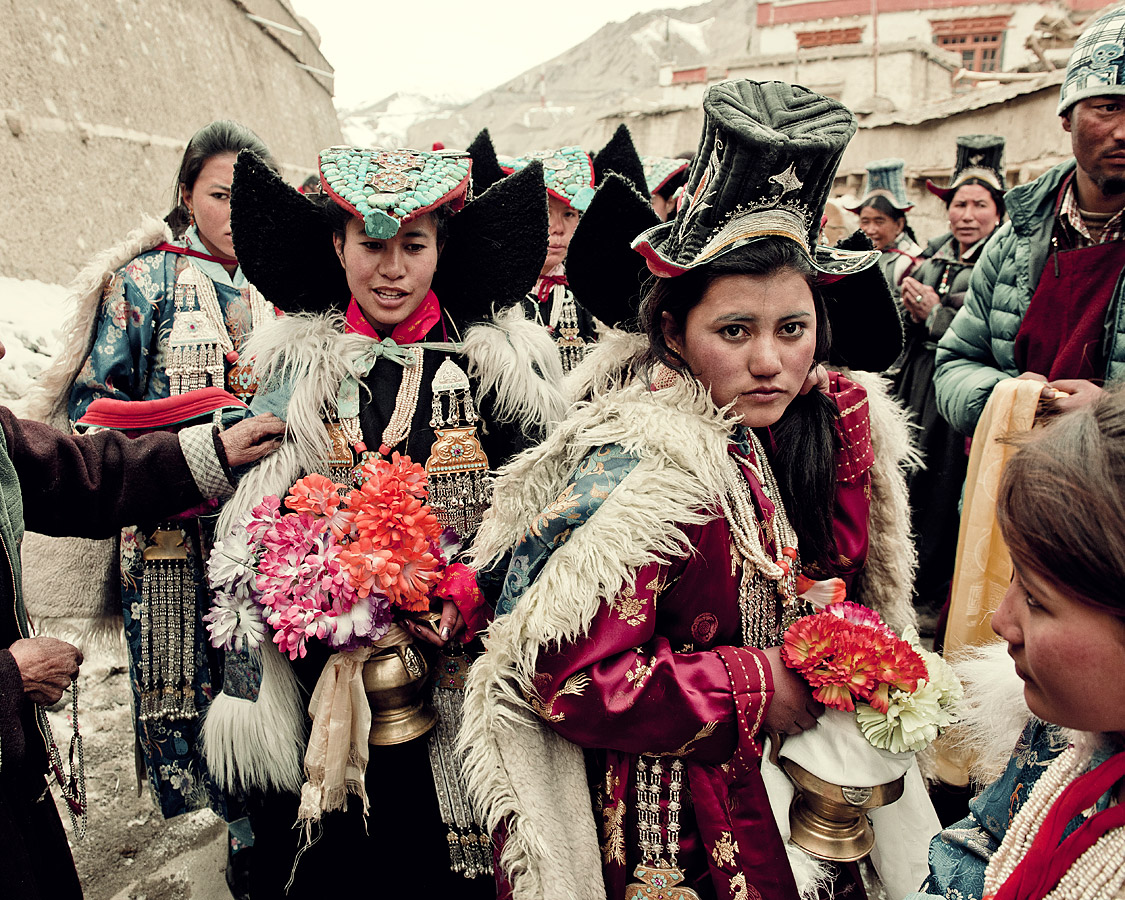
Leh Ladakh Travel Guide:
- Best Time to Visit Ladakh
- Facts About Ladakh
- Foods of Leh Ladakh
- History of Ladakh
- How to Reach Ladakh
- Ladakh Calender & Festival
- Ladakh Geography
- Trekking in Ladakh
- Ladakh Religion
- Leh Ladakh Travel Guide
- Local Experience of Ladakh
17. Mishmi
Region: Arunachal Pradesh
Also called Deng, this tribe has multiple sub-classes. According to mythology, Rukmini, the consort of God Krishna belongs to this tribe. Thus, the tribe celebrates numerous Krishna based festivals. During festivals, one can watch dances and skits related to Rukmini’s marriage to Lord Krishna.
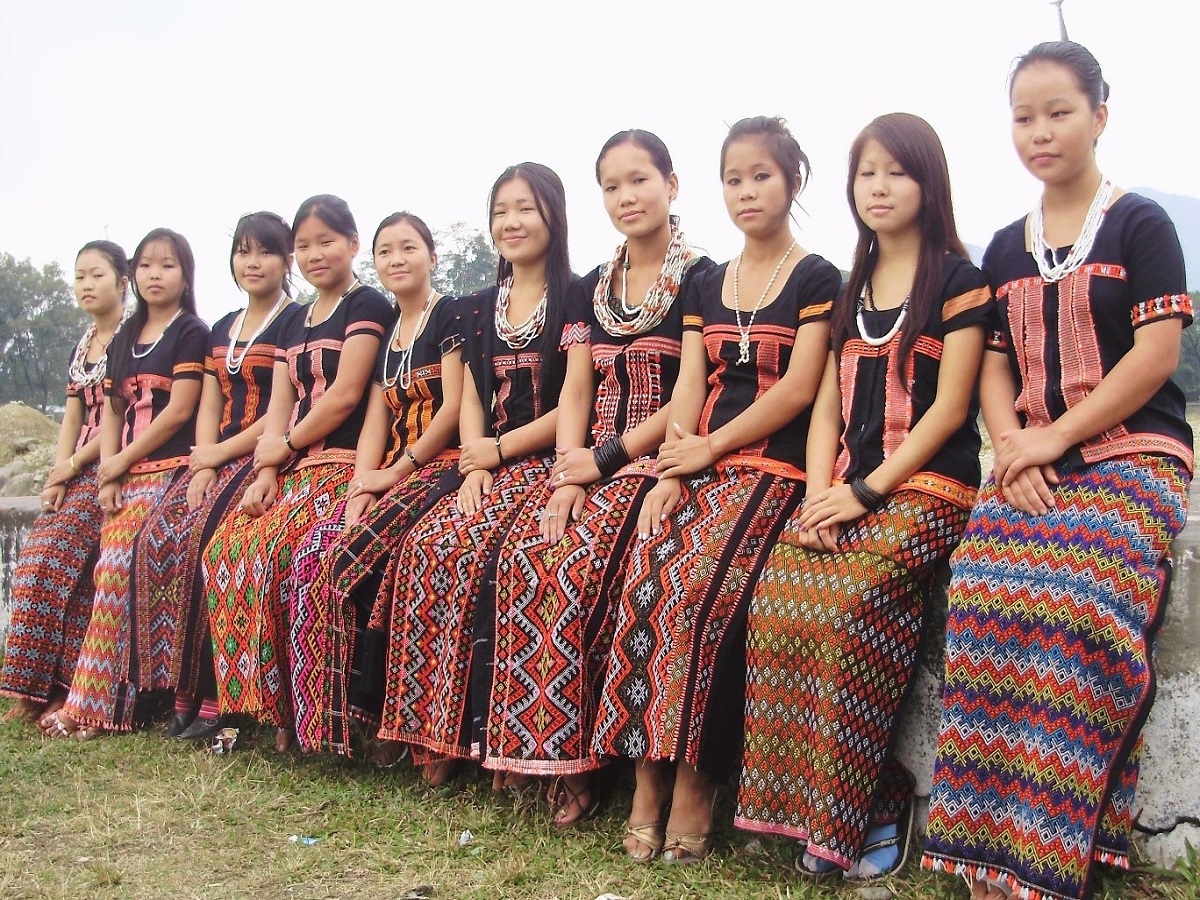
Also Read: Tawang Festival 2020 – A Famous Tourist Festival Of Arunachal Pradesh
18. Naga
Region: Naga
Naga tribe flourishes in Nagaland, Arunachal Pradesh, Manipur, and Assam. A small self-administered Naga region is also provided to this tribe. The majority of the tribe is Christian with a few Theravada Buddhists, Heraka, Animist, and others. The traditional lifestyle of this tribe is linked with the warrior culture of Wa people. They speak Kuki-Chin Naga and several other languages (89 different languages).
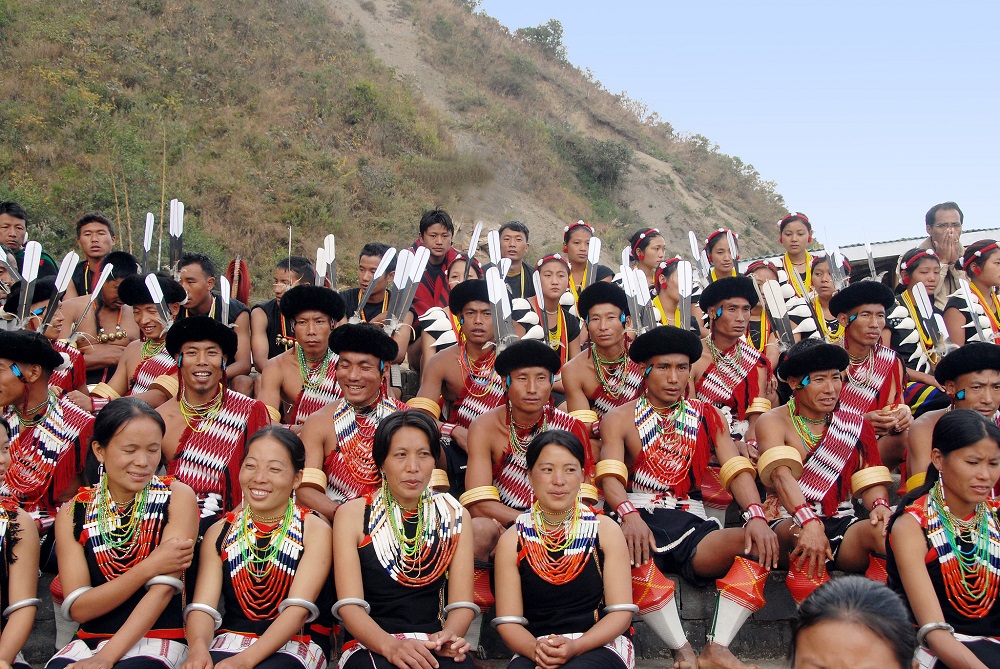
Men wear red headgear decorated with canine teeth and feathers of hornbills. Naga crafts are very common among tourists. Naga Shawls is one of the cliché souvenirs to buy from Nagaland. Other souvenirs include jewels, pottery, wood articles, baskets, metalwork, and others. Folk dance and music of this tribe are colorful and cheerful.
Many folk songs are narrative and are backed up with bamboo mouth organs, bamboo flute, cattle skin drum, and log drums. The best of all is the Hornbill Festival, which is attracting thousands of tourists.
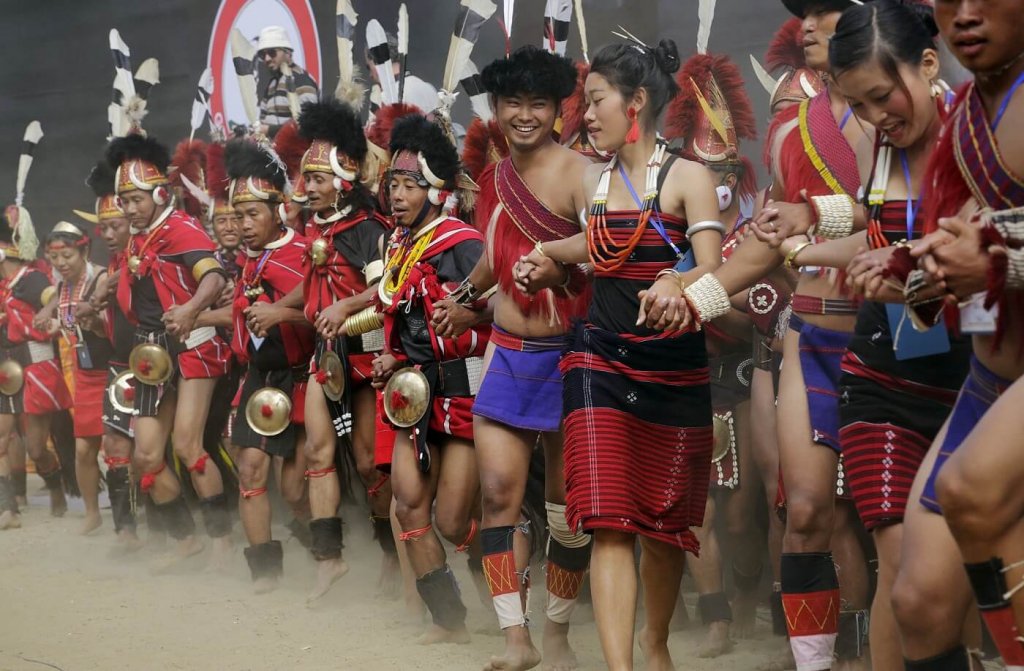
Also Read : 7 Best Places to Visit in North East India
19. Nocte
Region: Tirap
Nocte is an ethnic group within Naga. They follow Animism and Buddhism. Most of them have adopted Hinduism. The best of all festivals is ChaloLoku festival, which is a thanksgiving celebration famous for entertainment activities, feasts, and other merrymaking.
The warrior dance performed during this festival is the main attraction that tourists love. Men shave off their hair near the forehead. They have tattoos around their body. Men wear loincloth with waistband. Armlets of ivory are also common. Women wear skirts and blouse with goat horn earring and metal ornaments.
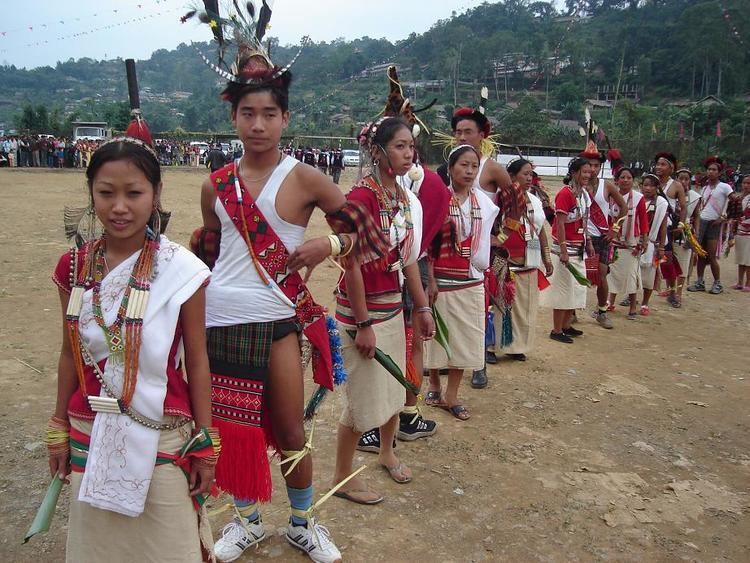
20. Raute
Region: North India, and Nepal
Raute is a nomadic tribe specialized in hunting monkeys. Their wooden carved bowls and ornate boxes are very common souvenirs. They use Raute language and are gatherers. This tribe moves from the current location if anyone dies in the community. Also they move with regards to the season.
No tourists are allowed to visit their camps or take part in hunting activities. If you wish to visit their camp and watch their lifestyle, you ought to buy something for them, like a trade.
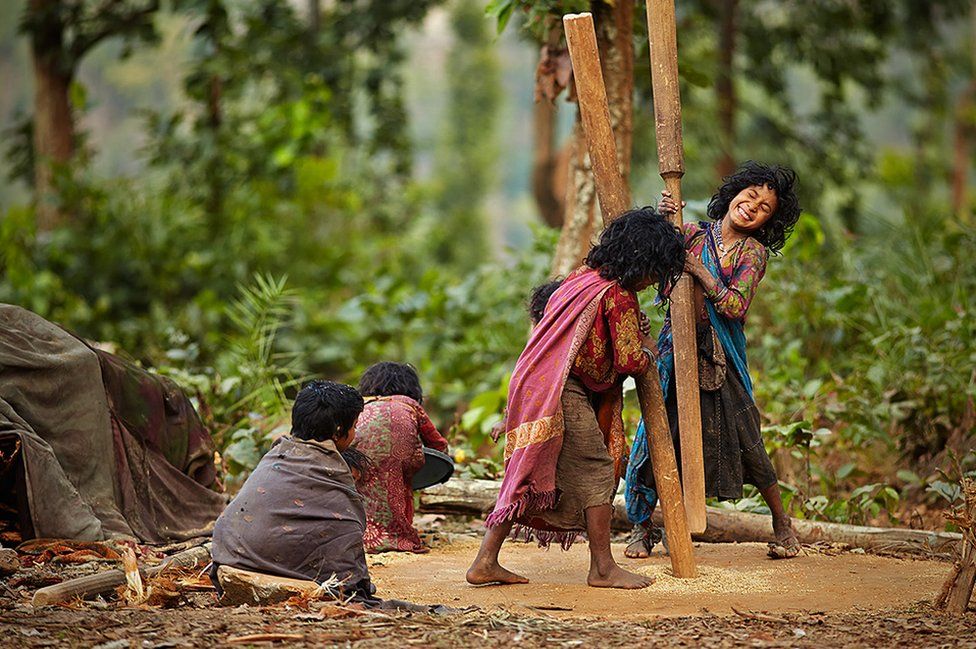
Also, Read: Top 5 Tribal Tour of India
21. Tharu
Region: East India and Nepal
Tharu follow Theravada Buddhism and they speak Tharu. It is a wonder that they are resistant to malaria due to genetic factors. Their cuisine is famous for dishes made with edible snails, ghonghi, rice wine, corn with pickled chili, and others.
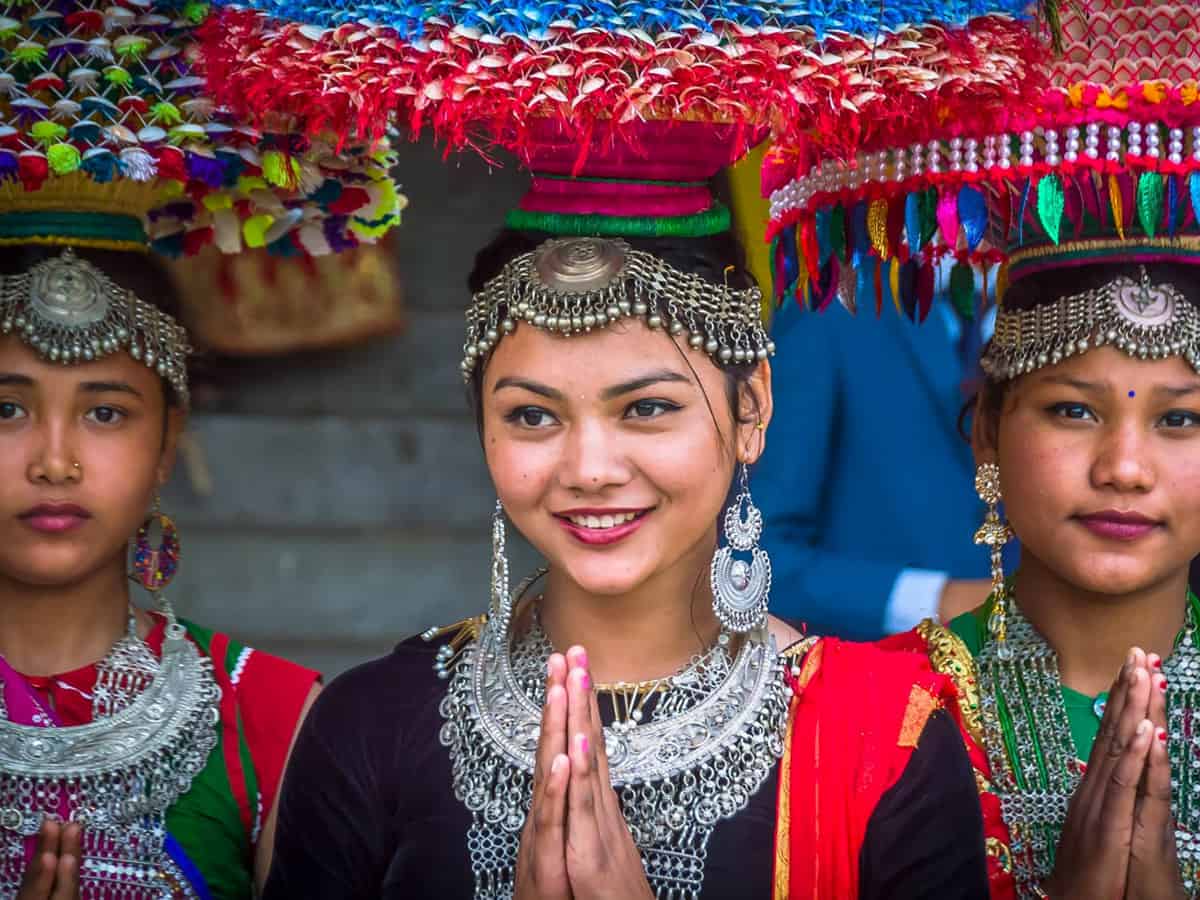
Also Read: 10 Most Famous Buddhist Temples In India
Suggested Tour:
22. Toda
Region: Tamil Nadu
Toda live-in Nilgiri region. The men wear dhoti and women wear skirt and shalya wrap. They are mostly herders. They live in tiny hamlets made with bamboo. People have to crawl into the hut. The huts have very small entrance as to protect them from animals. They speak a variant of Kannada with Telugu. Toda embroidery works are common souvenirs in the Ooty region.
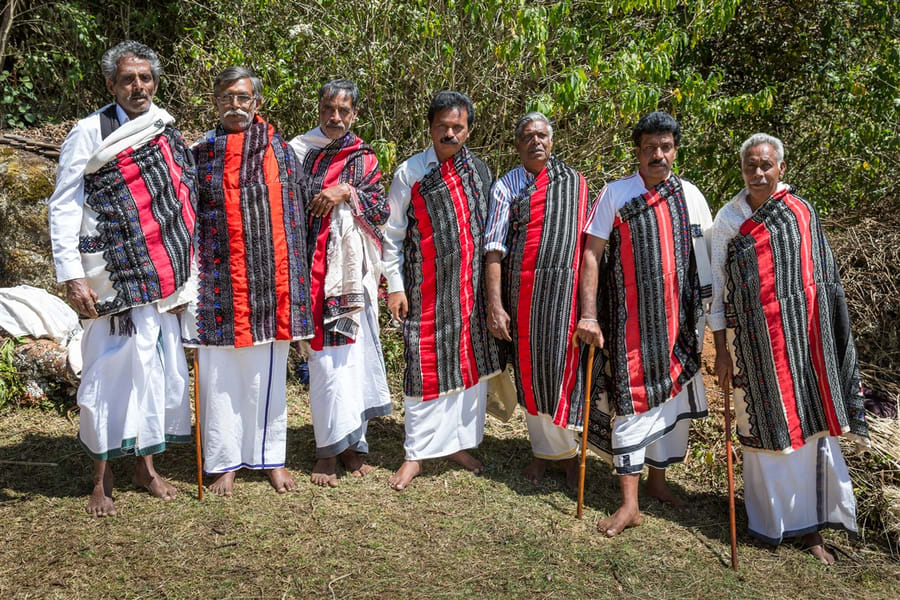
23. Tripuri
Region: Tripura
Tripuri were the original dwellers of Tripura region. They speak Kokborok and are primarily Hindus. This tribe contains many hill communities with different cultures. This tribe is famous for music, dance, and other celebrations, which are common during festivals.
They live in bamboo huts erected on plains. The women wear scarp up to their knee. If you are visiting this settlement, visit during Bowish festival, which is famous for Bwisu dance and other celebrations. Try to taste Muya dish (dry fish) of this community.
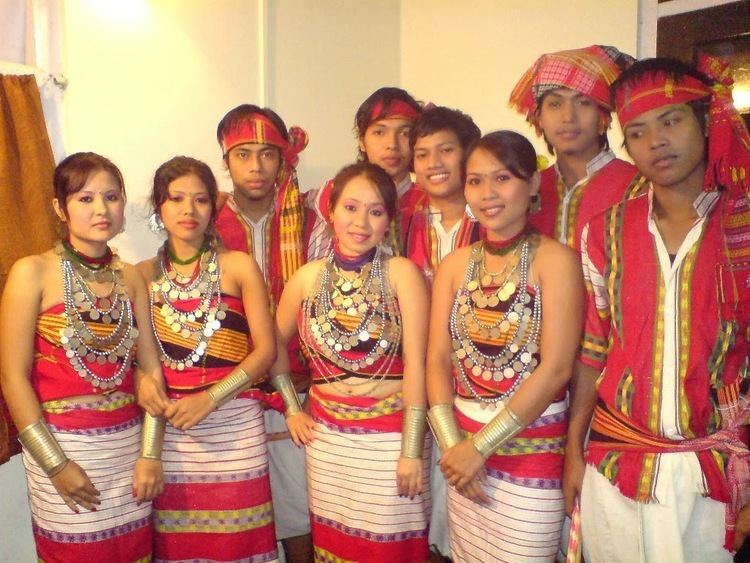
If you are taking part in the tribal tourism, remember to maintain decorum and respect their culture even if it looks weird to you. The population of this tribe and the intensity of their culture are diminishing as we speak and thus, enjoy them while you can.
Also Read : Seven Sisters of India – Complete Information About North East India States


